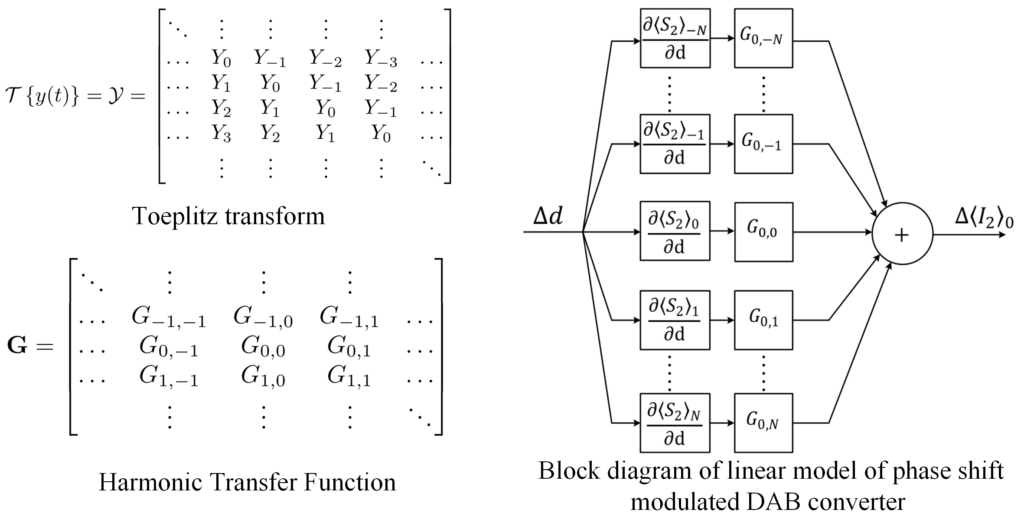Frequency-Domain Modeling of Dual-Active-Bridge Converter Based on Harmonic Balance Approach
Authors: Sayandev Ghosh, Dhiman Das, Bhim Singh, Sindhu Janardhanan, Sukumar Mishra
Extended Abstract:
The dual active bridge (DAB) converter contains both AC and DC states. Hence, state space average modeling of DAB is intricate. In the literature, several models of DAB have been developed to reconstruct the AC state. However, full order models provide better accuracy than reduced order models. Frequency domain based modeling captures the total behaviour of the converter such as generalized average modeling (GAM) or series-based solutions. However, with the consideration of more harmonics in the model, derivation of state equations and thus state matrices become tedious. Thus, it poses a limitation in the consideration of the harmonics in the large signal model. This paper proposes a harmonic state space (HSS) modeling framework for DAB that overcomes above obstacles and accurately models both the AC and DC states depending on the inclusion of the number of harmonics in it. The modeling framework described here is applicable to single, dual and triple phase shift modulation schemes. This modeling framework presents a straightforward approach and has a definite structure, which presents flexibility and ease in deriving the input-output relationship. This framework is based on complex form of Fourier series. In this modeling technique, two important properties are – 1) each time dependent quantities are replaced by block matrix containing its fourier coefficients. 2) multiplication of two time dependent variables are replaced by multiplication of Toeplitz matrix of one variable with Fourier block matrix of other variable. Thus the elements of the state space matrices are block matrices and the states of the system are Fourier states. Since the DAB is a DC-DC converter and the quantity of interest is DC in nature, DC Fourier coefficient is sufficient to obtain the time varying DC quantity directly. Both large signal and small signal models are derived and analyzed considering up to 9th harmonic order for each state. This model is validated by time domain simulation, performed on MATLAB/Simulink. Experimental investigations on a prototype of DAB also validate this model.


